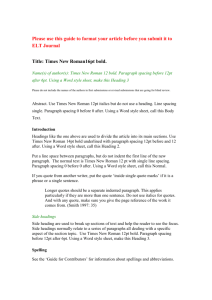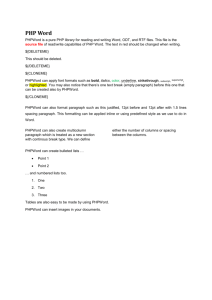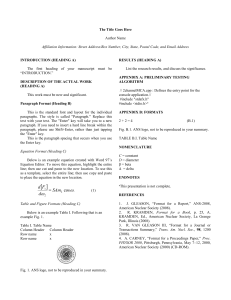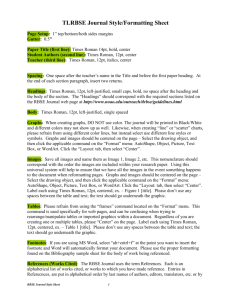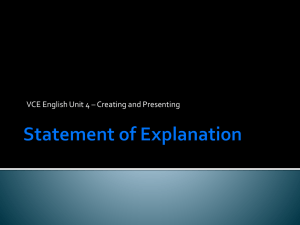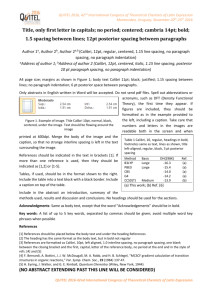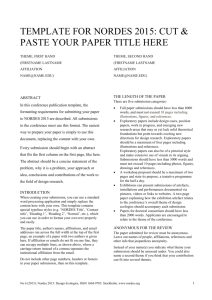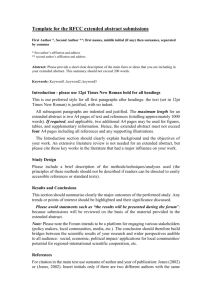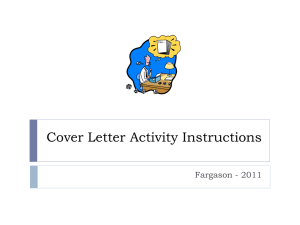Title: Times New Roman16pt bold. Preferred maximum 50
advertisement
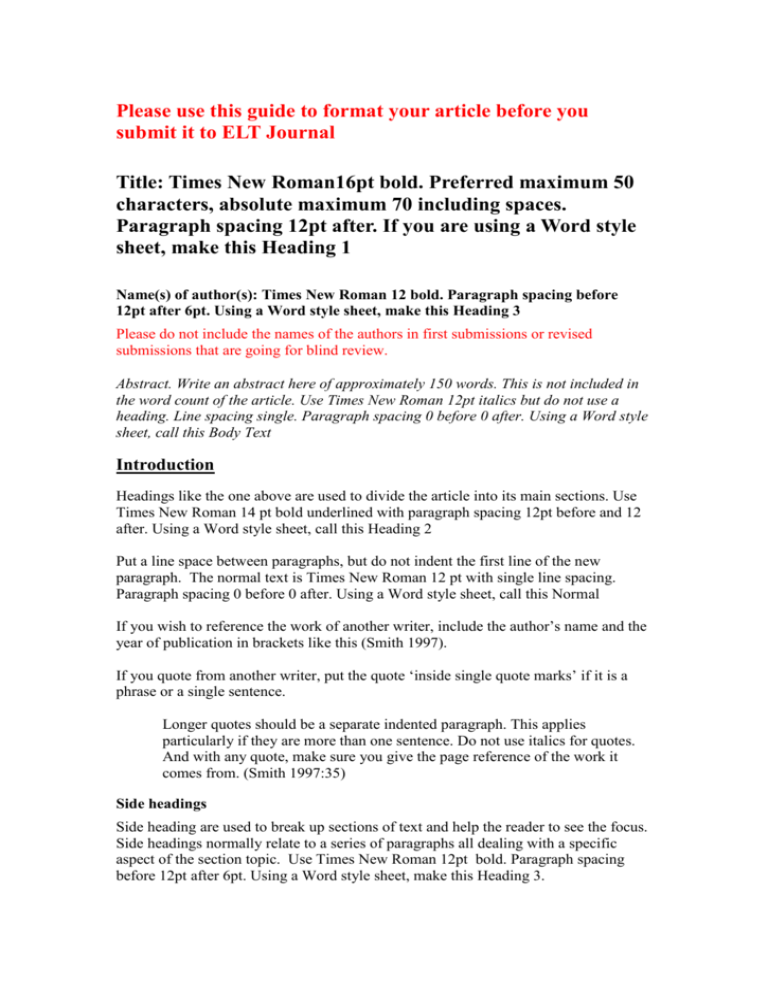
Please use this guide to format your article before you submit it to ELT Journal Title: Times New Roman16pt bold. Preferred maximum 50 characters, absolute maximum 70 including spaces. Paragraph spacing 12pt after. If you are using a Word style sheet, make this Heading 1 Name(s) of author(s): Times New Roman 12 bold. Paragraph spacing before 12pt after 6pt. Using a Word style sheet, make this Heading 3 Please do not include the names of the authors in first submissions or revised submissions that are going for blind review. Abstract. Write an abstract here of approximately 150 words. This is not included in the word count of the article. Use Times New Roman 12pt italics but do not use a heading. Line spacing single. Paragraph spacing 0 before 0 after. Using a Word style sheet, call this Body Text Introduction Headings like the one above are used to divide the article into its main sections. Use Times New Roman 14 pt bold underlined with paragraph spacing 12pt before and 12 after. Using a Word style sheet, call this Heading 2 Put a line space between paragraphs, but do not indent the first line of the new paragraph. The normal text is Times New Roman 12 pt with single line spacing. Paragraph spacing 0 before 0 after. Using a Word style sheet, call this Normal If you wish to reference the work of another writer, include the author’s name and the year of publication in brackets like this (Smith 1997). If you quote from another writer, put the quote ‘inside single quote marks’ if it is a phrase or a single sentence. Longer quotes should be a separate indented paragraph. This applies particularly if they are more than one sentence. Do not use italics for quotes. And with any quote, make sure you give the page reference of the work it comes from. (Smith 1997:35) Side headings Side heading are used to break up sections of text and help the reader to see the focus. Side headings normally relate to a series of paragraphs all dealing with a specific aspect of the section topic. Use Times New Roman 12pt bold. Paragraph spacing before 12pt after 6pt. Using a Word style sheet, make this Heading 3. Spelling Please use standard British English spelling of words such as ‘centre’ or ‘colour’. Where British English has alternative spellings of words such as ‘recognize’/‘recognise’, please use the ‘z’ form, e.g. ‘summarize’. But note that in British English ‘analyse’ is spelled with ‘s’. Notes (Heading 2) Any footnotes should come here at the end of the article. References (Heading 2) Donato, R. and F. Brooks. 1994.‘Looking across collaborative tasks: capturing L2 discourse development.’ Paper presented at AAAL Conference, Baltimore, Maryland. (Note that the initial of the second author comes before the family name) Lightbown, P. and N. Spada. 1999. How Languages are Learned (Second Edition). Oxford: Oxford University Press. Littlejohn, A. 1992. ‘Why are ELT materials the way they are?’. Unpublished PhD thesis, Lancaster University. Nunan, D. 1990. ‘Action research in the language classroom’ in J.C. Richards and D. Nunan (eds.). Pennington, M.C. 1990 ‘A professional development focus for the language teaching practicum’ in J. C. Richards and D. Nunan (eds.) (Note this format when your list of references contains two or more mentions of an edited collection.) Richards, J. C. and D. Nunan (eds.). 1990. Second Language Teacher Education. Cambridge: Cambridge University Press. (Note that these details of an edited collection to which two or more other references refer do not count as one of the 15 permitted references) Swales, J. 1989 ‘Service English programme design and opportunity cost’ in R.K. Johnson (ed.) The Second Language Curriculum. Cambridge: Cambridge University Press (Note this format when your list of references contains only one mention of an edited collection.]) Wenden, A. 1986a. ‘Helping language learners think about learning’. ELT Journal 40/1: 3-12. Wenden, A. 1986b. ‘What do second language learners know about their language learning?’ Applied Linguistics 7/2: 186-201. Note that there is an absolute maximum of 15 references per article, and authors may include only two references to their own work. References are not included as part of the overall 4000 word maximum for articles. The author (Heading 2) Please do not include information about the author(s) in first submissions or revised submissions that are going for blind review. Include here brief bio-data (maximum 75 words). Start off with your name in bold and if you wish, include at the end your email address as follows. Jane Smith was involved in language teaching and teacher education in the United Kingdom for many years before moving to New Zealand. She has published mainly in the areas of language teaching methodology and language learning. She is now working in the Language Centre at the University of XXX Email: janesmith@her.com Appendix (Heading 2) Any material included as an appendix counts as part of the overall 4000 word maximum for submissions.
